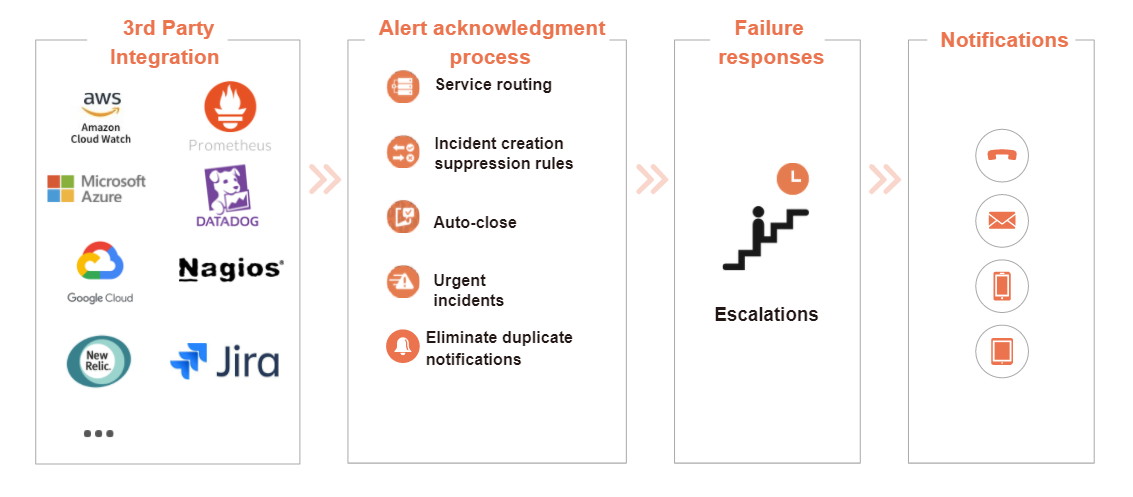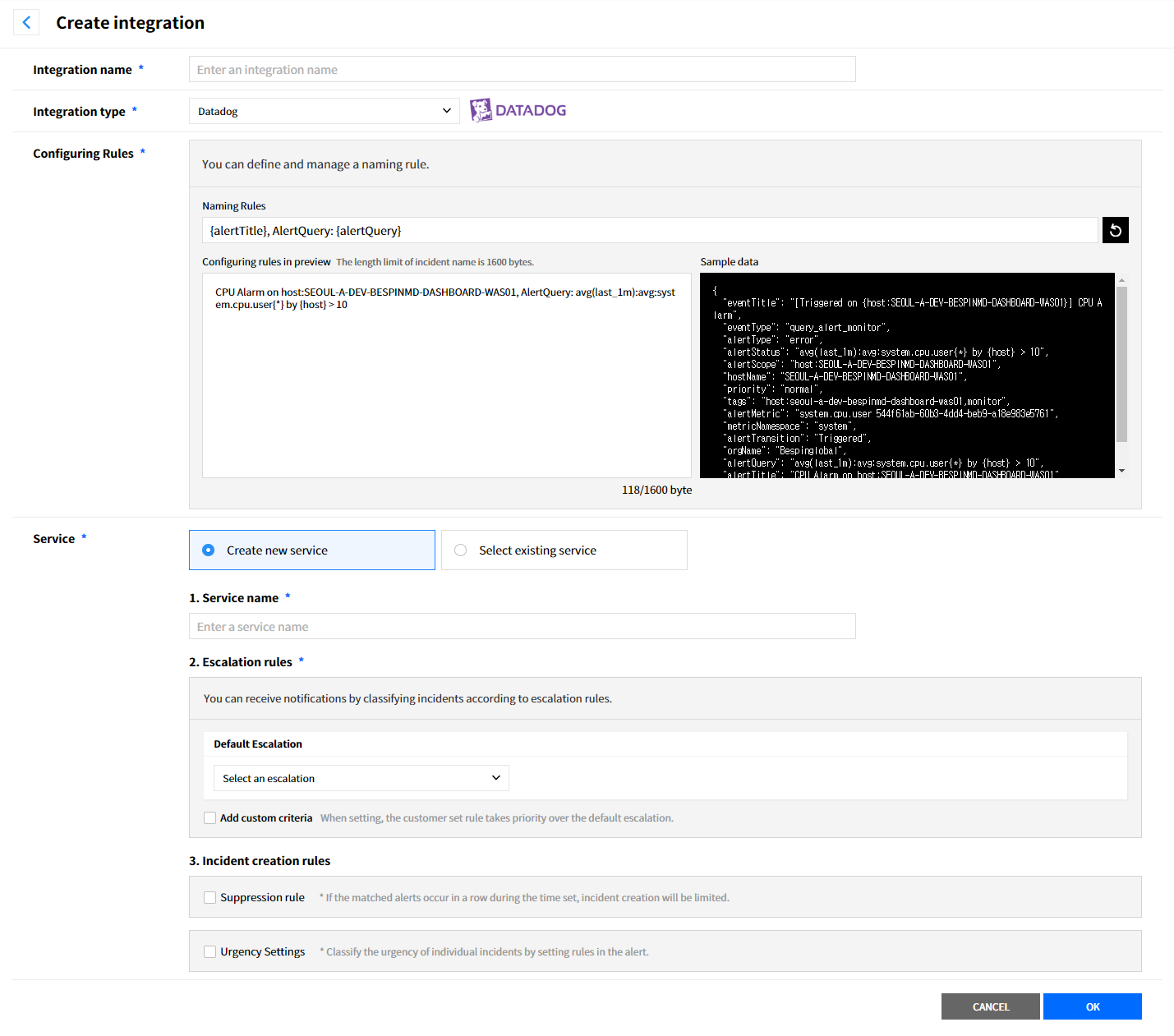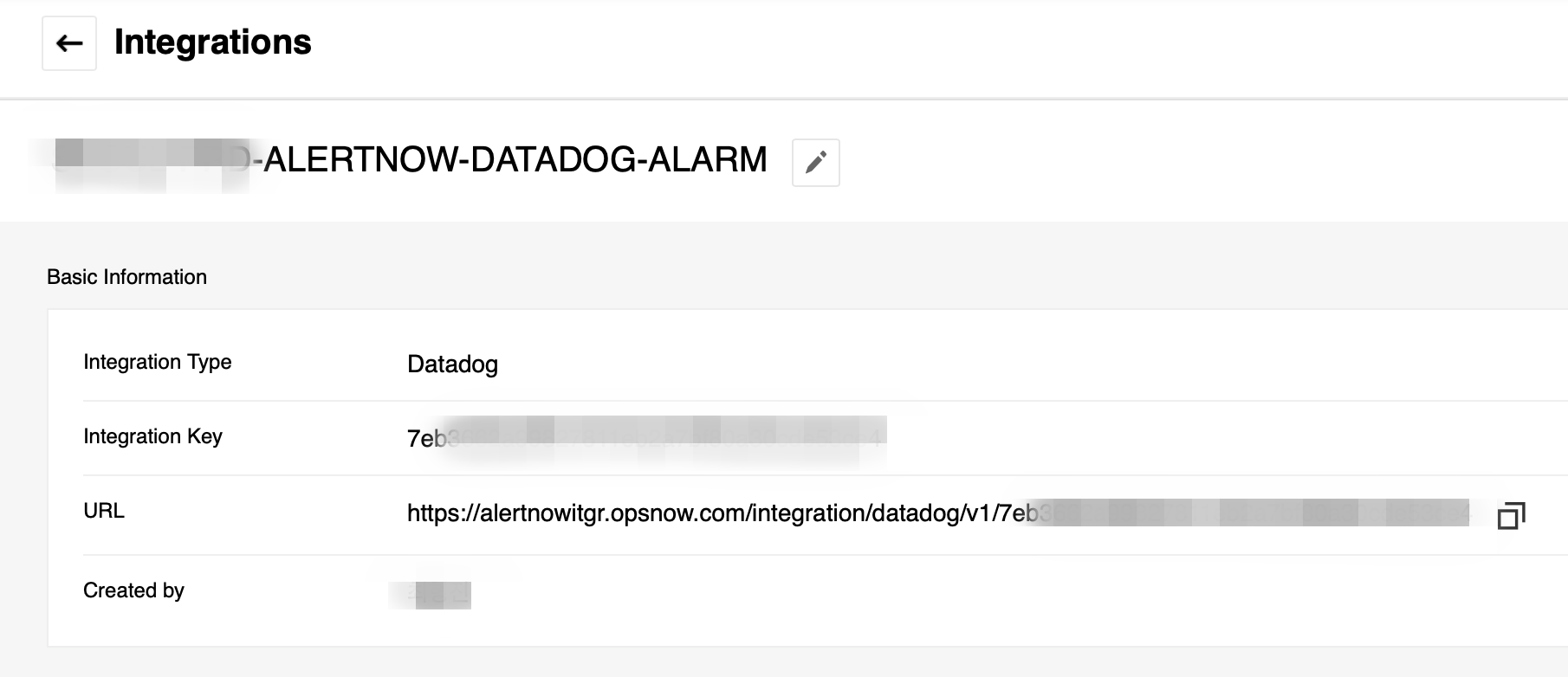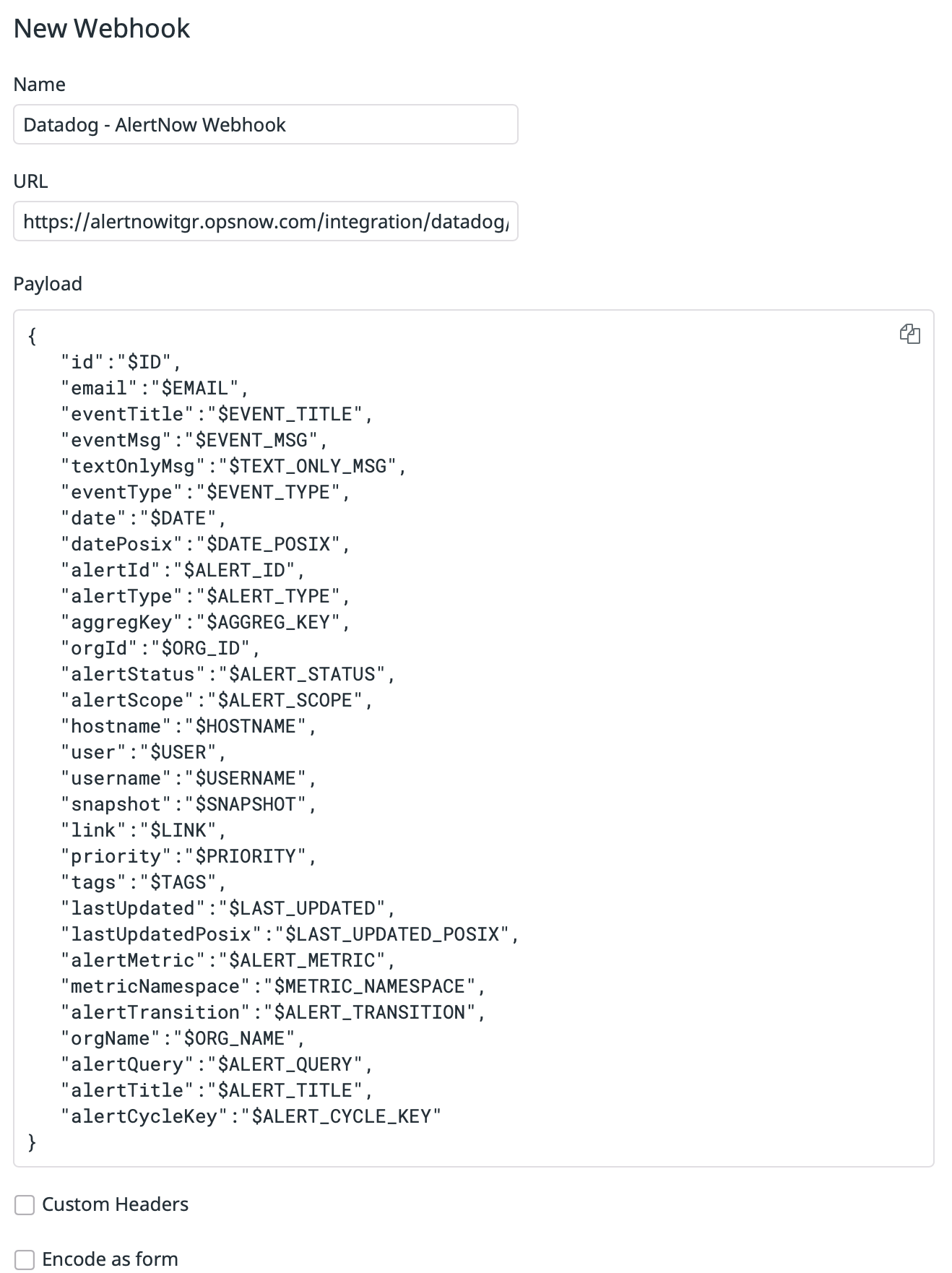- Esenciales
- Empezando
- Agent
- API
- Rastreo de APM
- Contenedores
- Dashboards
- Monitorización de bases de datos
- Datadog
- Sitio web de Datadog
- DevSecOps
- Gestión de incidencias
- Integraciones
- Internal Developer Portal
- Logs
- Monitores
- OpenTelemetry
- Generador de perfiles
- Session Replay
- Security
- Serverless para Lambda AWS
- Software Delivery
- Monitorización Synthetic
- Etiquetas (tags)
- Workflow Automation
- Centro de aprendizaje
- Compatibilidad
- Glosario
- Atributos estándar
- Guías
- Agent
- Arquitectura
- IoT
- Plataformas compatibles
- Recopilación de logs
- Configuración
- Automatización de flotas
- Solucionar problemas
- Detección de nombres de host en contenedores
- Modo de depuración
- Flare del Agent
- Estado del check del Agent
- Problemas de NTP
- Problemas de permisos
- Problemas de integraciones
- Problemas del sitio
- Problemas de Autodiscovery
- Problemas de contenedores de Windows
- Configuración del tiempo de ejecución del Agent
- Consumo elevado de memoria o CPU
- Guías
- Seguridad de datos
- Integraciones
- Desarrolladores
- Autorización
- DogStatsD
- Checks personalizados
- Integraciones
- Build an Integration with Datadog
- Crear una integración basada en el Agent
- Crear una integración API
- Crear un pipeline de logs
- Referencia de activos de integración
- Crear una oferta de mercado
- Crear un dashboard de integración
- Create a Monitor Template
- Crear una regla de detección Cloud SIEM
- Instalar la herramienta de desarrollo de integraciones del Agente
- Checks de servicio
- Complementos de IDE
- Comunidad
- Guías
- OpenTelemetry
- Administrator's Guide
- API
- Partners
- Aplicación móvil de Datadog
- DDSQL Reference
- CoScreen
- CoTerm
- Remote Configuration
- Cloudcraft
- En la aplicación
- Dashboards
- Notebooks
- Editor DDSQL
- Reference Tables
- Hojas
- Monitores y alertas
- Watchdog
- Métricas
- Bits AI
- Internal Developer Portal
- Error Tracking
- Explorador
- Estados de problemas
- Detección de regresión
- Suspected Causes
- Error Grouping
- Bits AI Dev Agent
- Monitores
- Issue Correlation
- Identificar confirmaciones sospechosas
- Auto Assign
- Issue Team Ownership
- Rastrear errores del navegador y móviles
- Rastrear errores de backend
- Manage Data Collection
- Solucionar problemas
- Guides
- Change Tracking
- Gestión de servicios
- Objetivos de nivel de servicio (SLOs)
- Gestión de incidentes
- De guardia
- Status Pages
- Gestión de eventos
- Gestión de casos
- Actions & Remediations
- Infraestructura
- Cloudcraft
- Catálogo de recursos
- Universal Service Monitoring
- Hosts
- Contenedores
- Processes
- Serverless
- Monitorización de red
- Cloud Cost
- Rendimiento de las aplicaciones
- APM
- Términos y conceptos de APM
- Instrumentación de aplicación
- Recopilación de métricas de APM
- Configuración de pipelines de trazas
- Correlacionar trazas (traces) y otros datos de telemetría
- Trace Explorer
- Recommendations
- Code Origin for Spans
- Observabilidad del servicio
- Endpoint Observability
- Instrumentación dinámica
- Live Debugger
- Error Tracking
- Seguridad de los datos
- Guías
- Solucionar problemas
- Límites de tasa del Agent
- Métricas de APM del Agent
- Uso de recursos del Agent
- Logs correlacionados
- Stacks tecnológicos de llamada en profundidad PHP 5
- Herramienta de diagnóstico de .NET
- Cuantificación de APM
- Go Compile-Time Instrumentation
- Logs de inicio del rastreador
- Logs de depuración del rastreador
- Errores de conexión
- Continuous Profiler
- Database Monitoring
- Gastos generales de integración del Agent
- Arquitecturas de configuración
- Configuración de Postgres
- Configuración de MySQL
- Configuración de SQL Server
- Configuración de Oracle
- Configuración de MongoDB
- Setting Up Amazon DocumentDB
- Conexión de DBM y trazas
- Datos recopilados
- Explorar hosts de bases de datos
- Explorar métricas de consultas
- Explorar ejemplos de consulta
- Exploring Database Schemas
- Exploring Recommendations
- Solucionar problemas
- Guías
- Data Streams Monitoring
- Data Jobs Monitoring
- Data Observability
- Experiencia digital
- Real User Monitoring
- Pruebas y monitorización de Synthetics
- Continuous Testing
- Análisis de productos
- Entrega de software
- CI Visibility
- CD Visibility
- Deployment Gates
- Test Visibility
- Configuración
- Network Settings
- Tests en contenedores
- Repositories
- Explorador
- Monitores
- Test Health
- Flaky Test Management
- Working with Flaky Tests
- Test Impact Analysis
- Flujos de trabajo de desarrolladores
- Cobertura de código
- Instrumentar tests de navegador con RUM
- Instrumentar tests de Swift con RUM
- Correlacionar logs y tests
- Guías
- Solucionar problemas
- Code Coverage
- Quality Gates
- Métricas de DORA
- Feature Flags
- Seguridad
- Información general de seguridad
- Cloud SIEM
- Code Security
- Cloud Security Management
- Application Security Management
- Workload Protection
- Sensitive Data Scanner
- Observabilidad de la IA
- Log Management
- Observability Pipelines
- Gestión de logs
- CloudPrem
- Administración
- Gestión de cuentas
- Seguridad de los datos
- Ayuda
AlertNow
Supported OS
Información general
AlertNow es una plataforma integrada de gestión de incidencias que recopila alertas de diversos y complejos entornos de TI y las envía a las personas adecuadas, lo que les permite gestionar las incidencias con rapidez. Al conectar AlertNow con Datadog, se sincronizan de manera automática las alertas de Datadog con las de AlertNow. Puedes gestionar alertas en una única plataforma, notificar a tus equipos y responder a problemas críticos de inmediato.
Lo que ofrece AlertNow:
Desencadenar y resolver incidencias de Datadog
Notificar a las personas adecuadas por correo electrónico, SMS, llamada de voz y aplicación móvil cuando ocurran las incidencias
Notificar a los usuarios en función de la política de escalado
Informes sobre MTTA y MTTR, informes de análisis

Configuración
AlertNow
Para conectar Datadog con AlertNow, crea un webhook y monitores en Datadog.
Usa tu cuenta existente o crea una cuenta de AlertNow en opsnow.com.
Inicia sesión en AlertNow y dirígete al menú Configuration > Integration (Configuración > Integración).
Haz clic en Create Integration (Crear integración) y, a continuación, selecciona la opción de Datadog.

En la página de crear integración, ingresa la información requerida y, a continuación, haz clic en el botón de aceptar para crear la integración.

Copia la URL de la página de integración de AlertNow.

Datadog
Sigue los pasos que se indican a continuación en tu cuenta de Datadog.
Abre el cuadro de integración de Webhooks.
Selecciona la pestaña Configuration (Configuración), desplázate hasta el final y haz clic en New (Nuevo).
En el formulario New Webhook (Webhook nuevo), ingresa un nombre significativo y la URL del webhook de AlertNow creada en la página de integración de AlertNow. El formato de la URL del webhook de AlertNow copiada es el siguiente. Sustituye tu clave de API por {ALERTNOW-API-KEY}.
https://alertnowitgr.opsnow.com/integration/datadog/v1/{ALERTNOW-API-KEY}
Copia la siguiente carga útil JSON y pégala en la ventana de carga útil.
{ "id":"$ID", "email":"$EMAIL", "eventTitle":"$EVENT_TITLE", "eventMsg":"$EVENT_MSG", "textOnlyMsg":"$TEXT_ONLY_MSG", "eventType":"$EVENT_TYPE", "date":"$DATE", "datePosix":"$DATE_POSIX", "alertId":"$ALERT_ID", "alertType":"$ALERT_TYPE", "aggregKey":"$AGGREG_KEY", "orgId":"$ORG_ID", "alertStatus":"$ALERT_STATUS", "alertScope":"$ALERT_SCOPE", "hostname":"$HOSTNAME", "user":"$USER", "username":"$USERNAME", "snapshot":"$SNAPSHOT", "link":"$LINK", "priority":"$PRIORITY", "tags":"$TAGS", "lastUpdated":"$LAST_UPDATED", "lastUpdatedPosix":"$LAST_UPDATED_POSIX", "alertMetric":"$ALERT_METRIC", "metricNamespace":"$METRIC_NAMESPACE", "alertTransition":"$ALERT_TRANSITION", "orgName":"$ORG_NAME", "alertQuery":"$ALERT_QUERY", "alertTitle":"$ALERT_TITLE", "alertCycleKey":"$ALERT_CYCLE_KEY" }Consulta la documentación de alertas de Datadog para crear monitores.
Soporte
¿Necesitas ayuda? Ponte en contacto con el servicio de asistencia de AlertNow.
